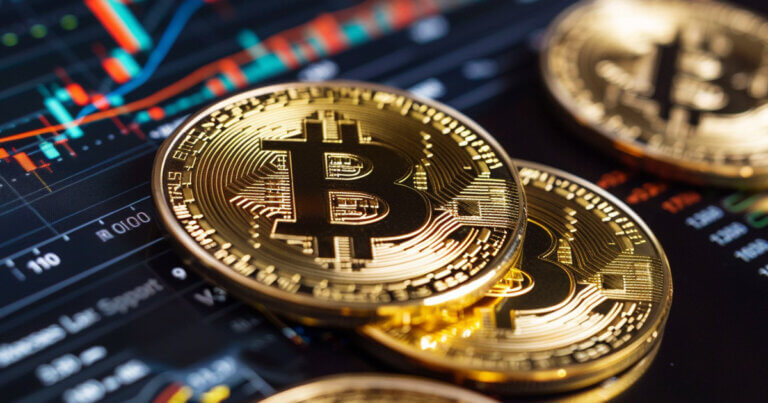 BTC derivatives contradict what Bitcoin stands for, inflating off-chain value beyond resources
BTC derivatives contradict what Bitcoin stands for, inflating off-chain value beyond resources BTC derivatives contradict what Bitcoin stands for, inflating off-chain value beyond resources
Bitcoin Derivatives: A step back from financial revolution?

Cover art/illustration via CryptoSlate. Image includes combined content which may include AI-generated content.
Bitcoin is a revolutionary concept—a decentralized, peer-to-peer electronic cash system, store of value, timestamping server, and event sequencer with a fixed supply directly tied to real-world energy consumption. Its core values of scarcity, transparency, and decentralization offer a stark contrast to the traditional financial system. However, the rise of Bitcoin derivatives, seen by many as a bullish indicator, may actually threaten to undermine these very principles that make Bitcoin unique and potentially transformative.
Bitcoin directly correlates to our natural resources
As climate physicist Margot Paez argues, Bitcoin’s often-criticized energy consumption is increasingly tied to renewable sources. This connection to real-world resources gives Bitcoin a tangible value proposition. Unlike traditional finance, where value can be created through complex instruments divorced from physical reality, Bitcoin’s worth is intrinsically linked to the computational power and energy expended in its creation.
Bitcoin is directly tied to the resources of our planet more than any financial instrument to date. Its correlation to energy consumption is far higher than tradFi, which requires vast numbers of workers, offices, cars, trucks, and other high-consuming infrastructure resources. By comparison, Bitcoin requires raw compute and minimal human maintenance.
At a time when human energy consumption is expanding almost parabolically, our ability to keep it in check is becoming increasingly harder, leading to critical damage to our planet. Bitcoin is already above 50% renewable, and its path toward 90-100% is relatively straightforward. Our natural resources, like Bitcoin’s supply, are limited – coal, oil, and gas will not last forever. Even renewable resources such as solar and nuclear are somewhat finite, but the scale at which the sun’s power depletion becomes relevant is fairly moot for this discussion.
Still, our financial tools should not be able to create wealth many multiples beyond our natural resources. TradFi is propped up by global bets on economic events, such as futures and options contracts. Do we really want Bitcoin to be supported by the same financial tools we aim to replace? Or do we want the “hardest form of money” to redefine a new era of financial freedom whereby we equate the value of the network directly to the energy used to secure it? Bitcoin is a fairer, truer representation of our capabilities and progress.
Bitcoin derivatives are at odds with the Bitcoin network
Off-chain Bitcoin derivatives introduce a layer of abstraction that echoes the very system Bitcoin sought to replace. By allowing synthetic exposure to Bitcoin without owning the underlying asset, derivatives potentially dilute the scarcity principle fundamental to Bitcoin’s design. This creates a form of “digital double-spending” – not in the blockchain itself, but in the broader ecosystem.
Moreover, derivatives trading often occurs on centralized platforms, contradicting Bitcoin’s decentralized ethos. This centralization reintroduces counterparty risks and opacity, stepping away from the transparency offered by Bitcoin’s public ledger.
While derivatives offer benefits like risk management and price discovery, they also introduce complexity that may hinder Bitcoin’s potential for financial inclusion. The simplicity of Bitcoin as digital gold or cash becomes obscured by sophisticated financial products, potentially alienating the very users it aimed to empower.
Furthermore, as Paez suggests, Bitcoin mining could catalyze clean energy development by providing flexible load for energy grids. Derivatives trading, disconnected from this physical process, doesn’t contribute to this potential ecological benefit.
In essence, Bitcoin derivatives risk recreating the same financial superstructure that Bitcoin was designed to circumvent. By layering additional value not directly related to our natural resources, we may be holding Bitcoin back from realizing its true potential as a transparent, efficient, and ecologically sustainable alternative to traditional finance.
Who benefits from Bitcoin derivatives? ETF-authorized participants like JP Morgan, billionaire investors playing the market, degen traders who missed the last bull run looking to make up time with leverage, and other institutional investors. Who benefits from on-chain Bitcoin transactions? Well, all of the above, plus individual investors and miners securing the network.
For Bitcoiners who trade derivatives, it’s crucial to consider whether these financial innovations align with Bitcoin’s original vision. Perhaps, in our quest for financial sophistication, we’re inadvertently stepping away from the revolutionary simplicity that made Bitcoin a beacon of financial reform.
































































